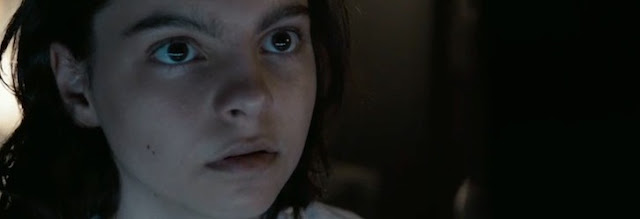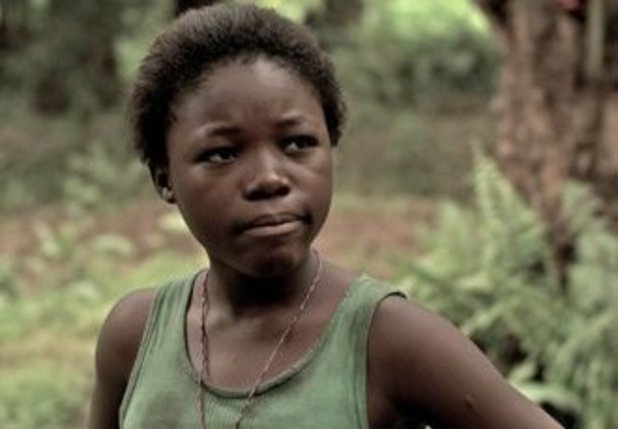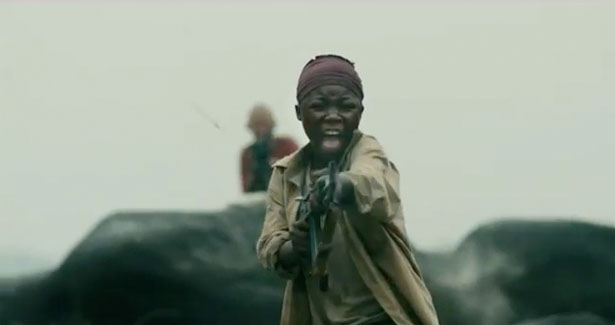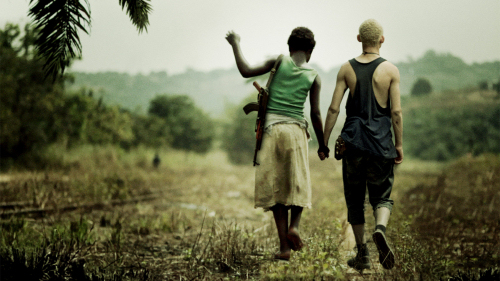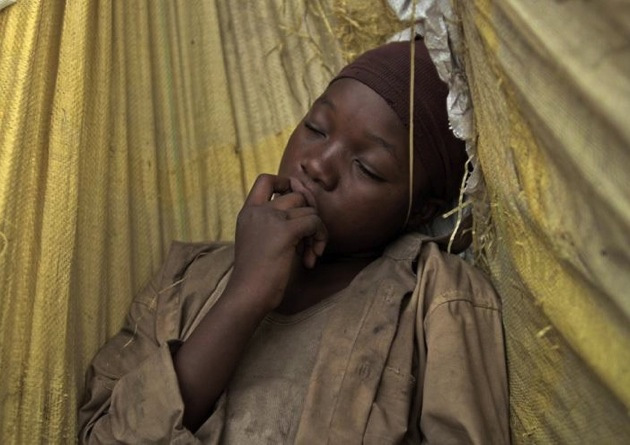Written by Megan Kearns.
Like most Hollywood films, The Maze Runner — the latest young adult (YA) novel set in a dystopian future adapted for the screen — revolves around a white male protagonist. While mildly entertaining, rather than exploring new ideas and themes, it suffers from gender and racial tropes.
Echoing themes in Lord of the Flies (boys in the wild creating their own society) and The Hunger Games (dystopian setting, a treacherous obstacle course and adults manipulating children for a supposedly greater good), The Maze Runner follows Thomas, whose memories have been erased, as he’s transported into a community of boys living in a forest, called the Glade, in the middle of a fluctuating maze.
It’s a decent film. Nothing special, nothing great. Just fine. I couldn’t care less who lived or who died because all of the characters possess gossamer personalities. The beginning opens with disorientation dropping you right into the story. But beyond that, it didn’t really contain much suspense. Plus I was able to predict pretty much the entire plot about 20 minutes in. Despite a few similarities, The Maze Runner lacks the stellar acting, character development, gravitas and social commentary that helped catapult The Hunger Games to blockbuster success.
The racial diversity of the boys in the Glade pleasantly surprised me. Not only do we see multiple boys of color (who talk! who matter as characters!), it was fantastic to see boys of color in leadership positions: Albie, the group’s leader and the very first boy ever sent up, and Minho, the Keeper of the Runners. Now, I want to applaud this film for its diversity. However, the film (and the book too) can’t resist centering a white male protagonist who is considered “special” and “different” because he’s curious about things and asks questions. Of course, Thomas can figure out everything better and faster than everyone else, even the people who have been in the Glade for years. Sure, you could argue that perhaps that has to do with his repressed memories resurfacing. But I think the real reason is that heaven forbid we have a hero who isn’t white or male, aside from a few notable exceptions (Katniss in The Hunger Games, Tris in Divergent).
Even though there are white boys in the Glade, The Maze Runner feels akin to a White Savior narrative. Now, the White Savior trope is typically reserved for movies about Black people and slavery or Indigenous people, who need to be “saved” or “civilized” by a lone white hero. Yet it still parallels the trope as the boys in the Glade need the new white guy to teach them about the maze and to attempt an escape. Minho has been mapping out the maze for three years, no small feat since the maze changes every night. Yet it’s Thomas, not Minho, who figures out how to kill a Griever and the code to use at the end of the maze. It’s Thomas who motivates the others to try to escape when the others have become complacent.
Thankfully, Thomas doesn’t play a role in “establishing order and peace,” which Albie says they have achieved after the “dark days” of panic and fear. Author James Dashner was inspired by Lord of the Flies to write a series about boys depicting how “instead of killing each other and being animalistic, they would form a brotherhood and do whatever it took to protect each other.” The boys do all work cooperatively together. But Thomas is the only one who breaks the rules and enters the maze as it’s closing to try to save Albie and Minho. While Thomas doesn’t civilize the boys, he does demonstrate a sense of bravery and morality the others seem to ignore or repress. The film’s message seems to be that we should question things, not passively accept them, which Thomas’s presence in the Glade embodies.
So where are all the girls? The movie never explains that. And no one seems to ask that question. The boys are shocked to see a girl, Teresa, come up the elevator the day after Thomas arrives. She is the only girl to ever arrive in the Glade. Aside from an extremely brief performance by Patricia Clarkson, Teresa is the only female character we ever see.
One nice change from most YA movies is the lack of a predictable love triangle or the emergence of a love story. With the presence of one girl, the film could have easily fallen into that trap. Love stories aren’t in and of themselves bad. In fact, I love them. It annoys me how often media denigrates love stories, typically because women and girls are the primary intended audiences. No, I’m glad no love story exists because it usually reduces a female character’s role to nothing more than an object of desire for the dudes in the film. It also typically reifies heteronormative relationships, also queer diversity would have been great to see here.
Teresa is the epitome of the Smurfette Principle. She is the only girl amongst 50 or so boys. Lacking true agency and personality, Teresa’s sole purpose in the film appears to be to potentially create confusion and chaos amongst the boys and to inspire Thomas. Sure, we see her acting feisty as she throws items off of a tower and tosses a torch at a Griever. But ultimately, her role only matters in how it relates to and impacts the male characters. Yes, Teresa tells Thomas that maybe there’s a reason they’re both different. And she encourages him that they should escape. But that’s about it. If I had any hopes for Teresa’s growth in the subsequent films in the trilogy (four books if you count the prequel), this article on the sexism in the books dashed that.
The Smurfette Principle remains so problematic because it reinforces the notion that “boys are the norm,” only their perspectives matter and society values girls only in their relation to boys. Talking about the film adaptation and gender, The Maze Runner author James Dashner said, “It’s refreshing to have the main character be a male for once, seems like there’s been a lot of female leads.”
Ummmmmm, pardon me? No, no, no. Just. No. That’s an extremely problematic statement. So because there have been a few female-centric film franchises based on YA novels it’s “refreshing” for the main character to be male? Uh oh, lady movies have been doing well at the box office. Gasp! BRING BACK THE BOY MOVIES.
No, there is nothing “refreshing” about having a male protagonist. We are inundated with media revolving around cis, straight, white men and boys. Lest you think books overflow with female protagonists, they don’t. In fact, a chasmic gender gap exists in children’s literature. In YA-adapted films, for every Katniss, Bella and Tris, we see myriad male protagonists — Harry Potter, Ender’s Game, Eragon, Percy Jackson and the Olympians, I Am Number Four, Hugo, The Seeker: Dark is Rising, Charlie and the Chocolate Factory, The Giver. Not only does a dearth of female protagonists exist in films and TV overall, but also in films geared specifically towards children and television programs for children.
It matters that girls (and all genders) see diverse representations (gender, race, sexuality, age, body size, people with disabilities, etc.) on-screen. It matters that girls see themselves reflected in media.
While watching The Maze Runner, I couldn’t help thinking, wouldn’t this story have been so much more rich and interesting if it had been told from Minho’s or Teresa’s perspective? Why not feature a girl or a boy of color as the protagonist? Even though it’s framed as a male-centric story, it still could have contained complex, nuanced fully developed female characters. It could have made an intriguing commentary on constricting, stereotypical gender roles or the toxicity of hyper masculinity. It could have explored how gender and race impact social structures and people’s experiences. Maybe I expect too much from my movies.
Despite its racial diversity, instead of forging a new trail, The Maze Runner follows a fairly formulaic and familiar story filled with tired tropes.
Megan Kearns is Bitch Flicks’ Social Media Director, a freelance writer and a feminist vegan blogger. She’s a member of the Boston Online Film Critics Association (BOFCA). She tweets at @OpinionessWorld.













